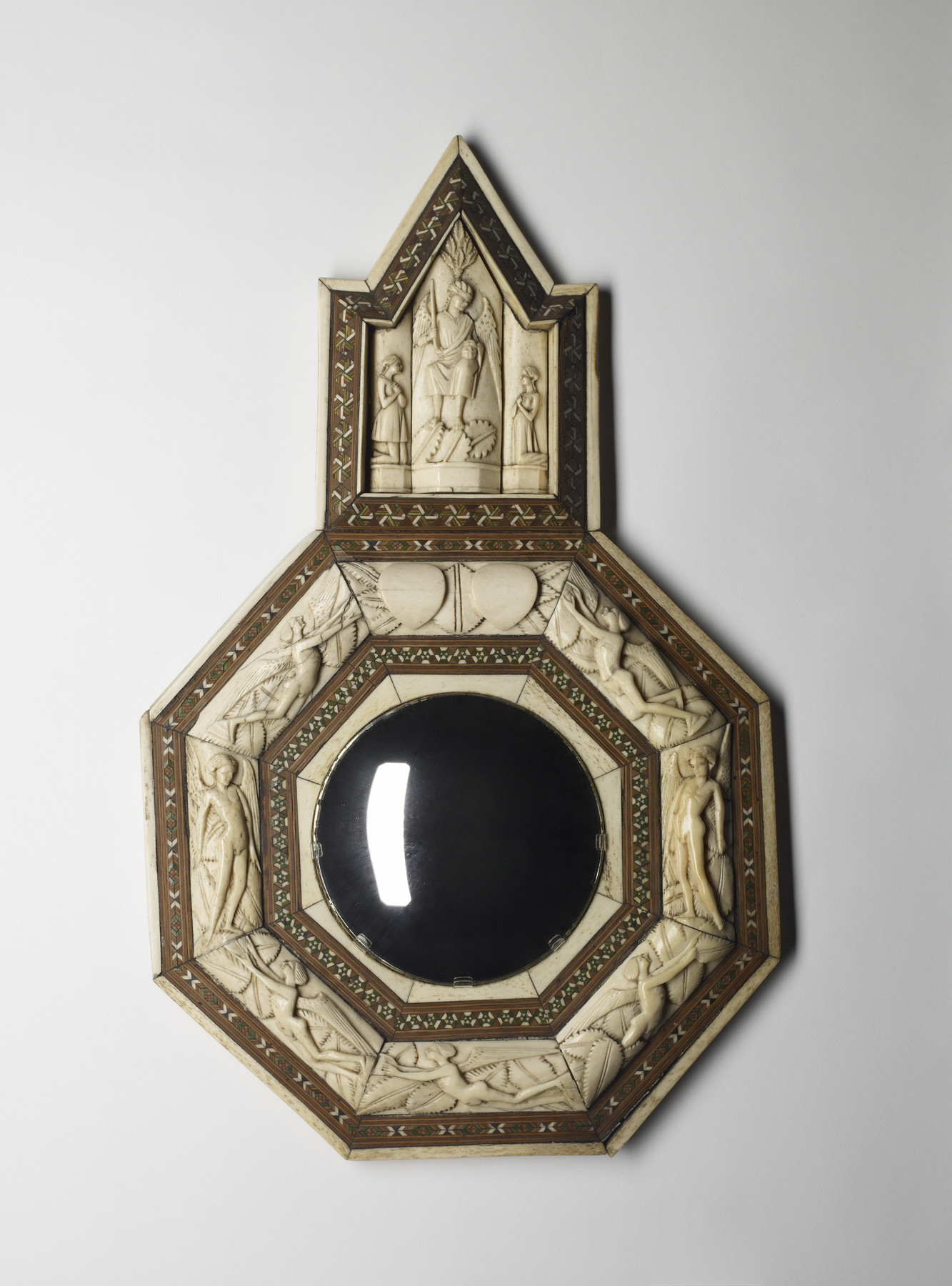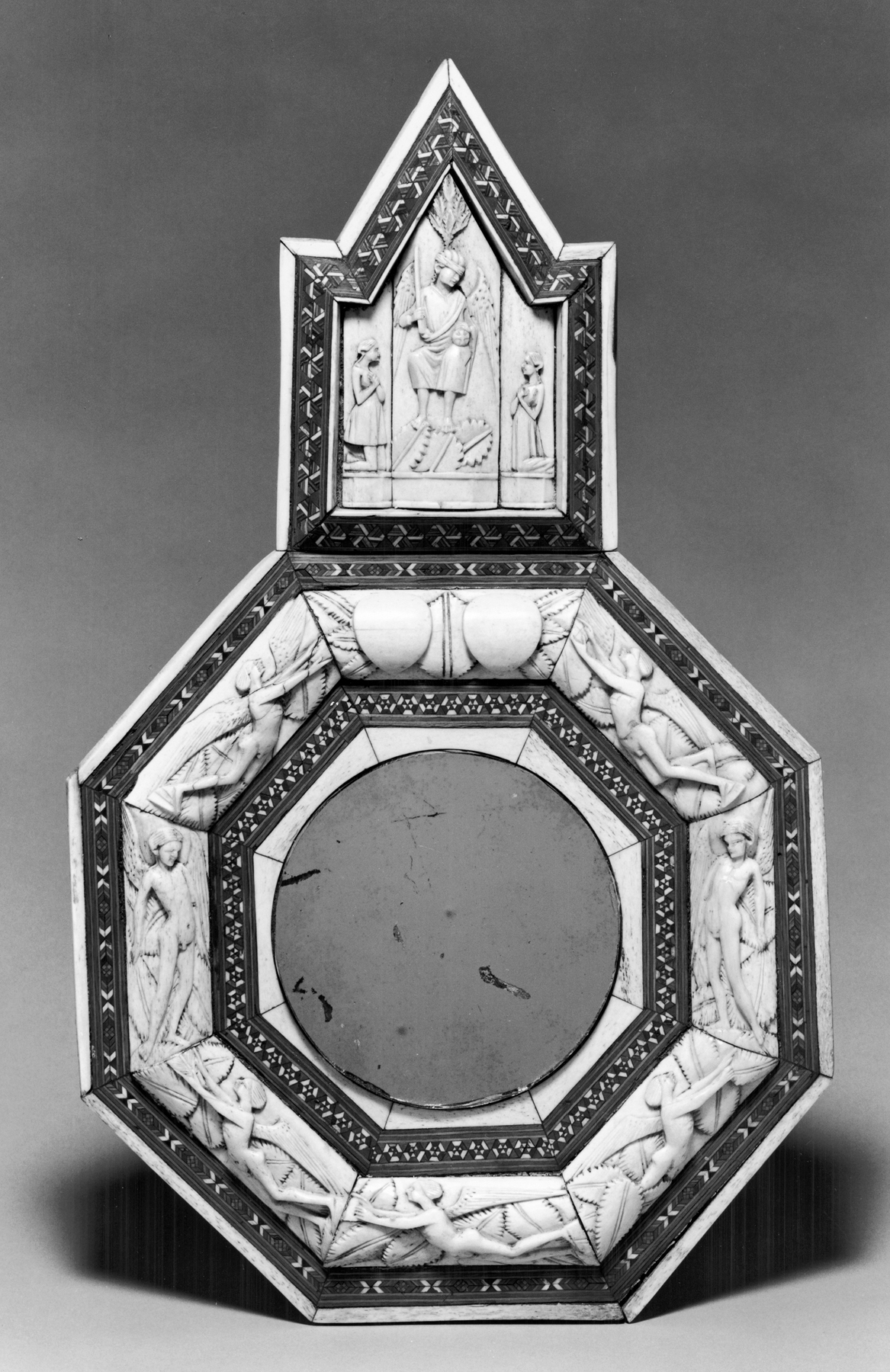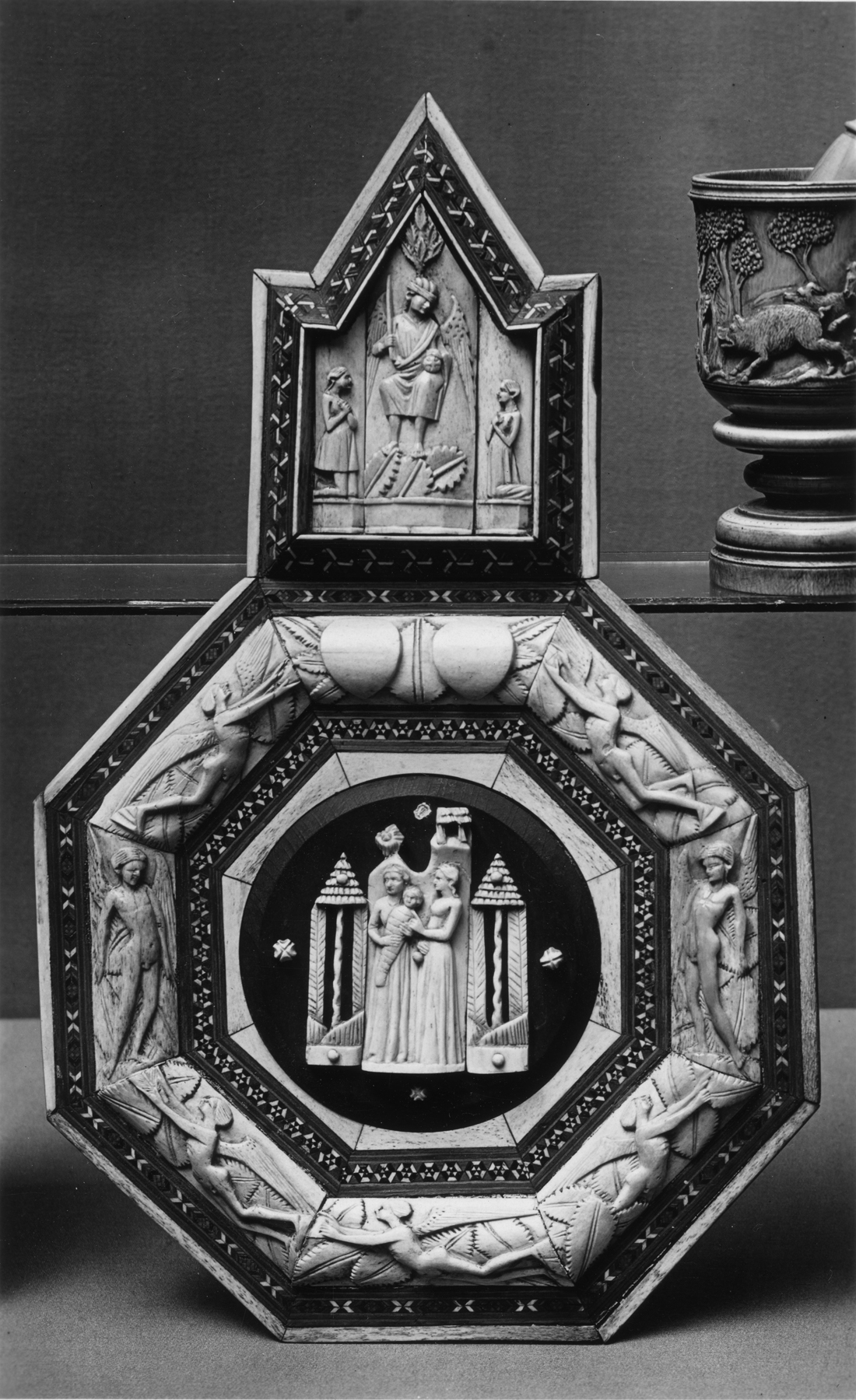Mirror Frame
(Renaissance Europe )
This frame once held a mirror made of convex glass or polished metal. (The present mirror is a modern replacement.) This is a type of decorative personal luxury object that might be part of a bride's dowry; the empty shields would have been painted with the coats of arms of the wedded pair, represented by the young kneeling couple paying their respects to the winged figure of fate, his eyes blindfolded to suggest the element of luck in the proceedings but holding a scepter and globe to convey his universal sway. Graceful, winged spirits surround the mirror itself. The distinctive inlays of stained wood and horn mark this piece as from the workshop of Baldassare Embriachi (personally active ca. 1390-1409) about 1390-1435 in Venice.
Provenance
Provenance (from the French provenir, 'to come from/forth') is the chronology of the ownership, custody, or location of a historical object. Learn more about provenance at the Walters.
F. Ongania, Venice [date and mode of acquisition unknown]; Henry Walters, Baltimore, by purchase; Walters Art Museum, 1931, by bequest.
Geographies
Italy, Venice (Place of Origin)
Measurements
H: 17 5/8 x W: 10 7/8 x D:1 3/16 in. (44.7 x 27.6 x 3 cm)
Credit Line
Acquired by Henry Walters, 1930
Location in Museum
Not on view
Accession Number
In libraries, galleries, museums, and archives, an accession number is a unique identifier assigned to each object in the collection.
In libraries, galleries, museums, and archives, an accession number is a unique identifier assigned to each object in the collection.
71.92










